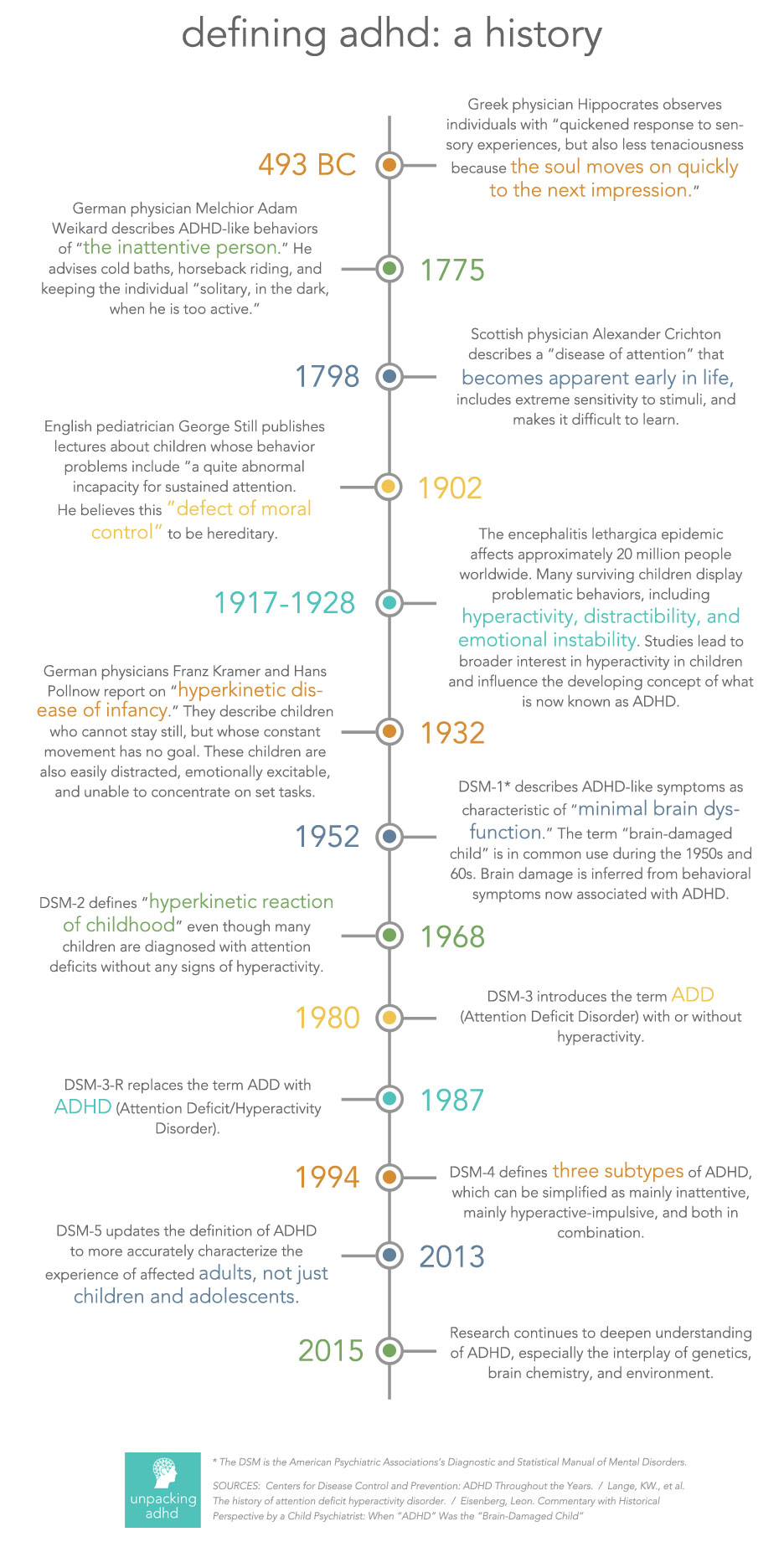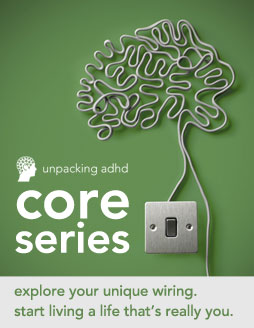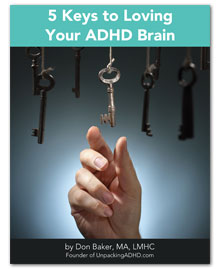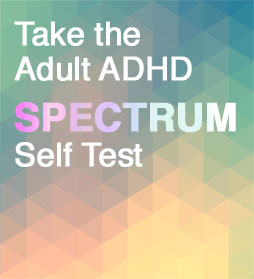If you live with traits of ADHD, you’ll be happy to know that you’re not “brain-damaged” and you don’t have a “disease of moral control.” But that might have been your diagnosis 50 or 100 years ago.
What is ADHD? Why have we only been talking about it for the past 30 years? Where was it before? Is ADHD the same as ADD?
Our new ADHD definition timeline helps answer those questions. If you haven’t checked it out yet, I encourage you to do so now. I’m very visual and find that this timeline gives a quick, concise overview of key dates and events related to our “high spectrum” wiring. It shows how our definition of ADHD has shifted over time.
As you can see, our understanding has come a long way. Today, the therapeutic community defines Attention-Deficit/Hyperactivity Disorder (ADHD) as a neurobiological syndrome with genetic and environmental components. There are three core traits, which may present in various combinations depending on the individual:
- Inattention (distractibility)
- Hyperactivity (physical and/or cognitive restlessness)
- Impulsivity
However, it’s clear that the collection of characteristics and behaviors we now recognize as ADHD has been observed for thousands of years. ADHD is not, as some have argued, a new phenomenon that was caused by video games or trumped up to sell pills.
We live in an exciting time where our understanding of so many things is changing so fast. Take a minute and post a response here on the blog about what you’re learning! So many others will benefit.





